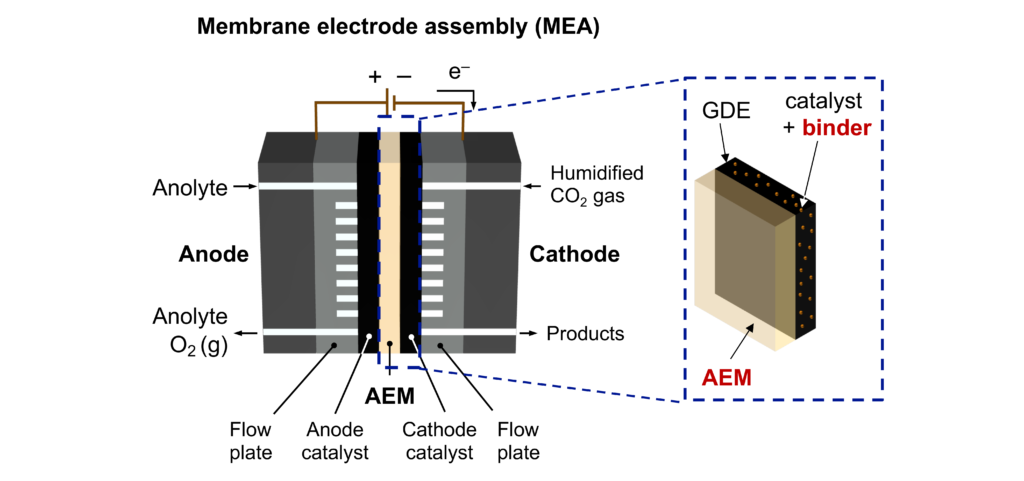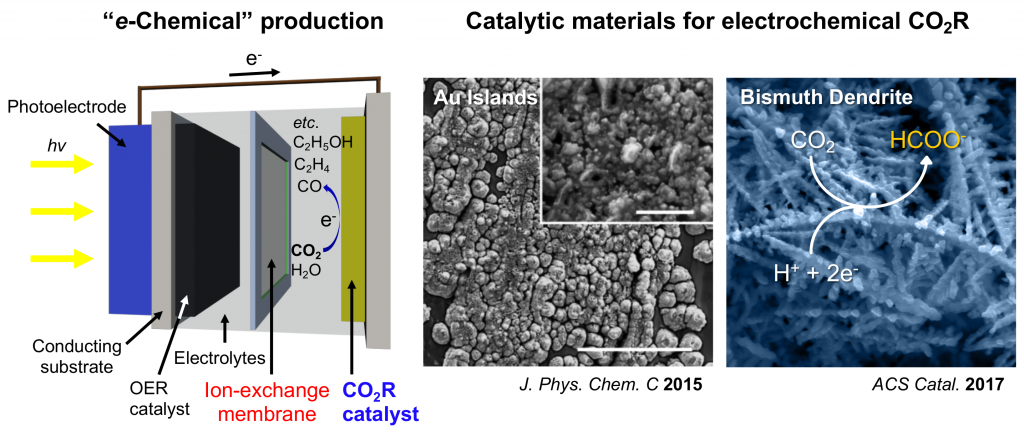Design, Synthesis, and Application of Ionomers

In the course of achieving industrially relevant energy efficiencies and current densities, different kinds of CO2 electrolyzers were auditioned. These electrolyzers utilize gas-diffusion electrodes (GDEs) where gaseous CO2 is directly fed to catalysts. One good architecture among these designs is a membrane electrode assembly (MEA) in which a cathode GDE is pressed to an ion-exchange membrane (IEM) without a catholyte. For the engineering of such devices, it is required to employ active, selective, and stable electrocatalysts as well as highly ion-conducting and chemically stable solid polymer electrolytes. These ion-exchange polymers (or ionomers) can serve both as membranes and binders for GDEs.

An ionomer is a polymer with a small proportion of the constitutional units having ionic (or ionizable) groups. Ionomers can be used to constitute (a) ion-exchange membranes and (b) binders added to a catalyst layer in a zero-gap reactor for electrochemical CO2 reduction or fuel-cell systems. Representative examples include a Sustainion® membrane and ionomers developed by Dioxide Materials. Ionomers need to conduct specific ions selectively at high rates for these applications. The transport of ions is enabled by water-filled hydrated ionic domains in the polymer matrix. We design and synthesize anion-exchange ionomers for anion-exchange membranes (AEMs) and catalyst binders that will show desired properties.
Catalysts for Electrochemical CO2 Reduction

Electrochemical CO2 conversion to value-added chemicals with renewable electricity is a promising strategy for sustainable industrial development. The success of this approach requires an in-depth understanding of electrocatalysis, the development of efficient electrocatalysts, ion-exchange membranes, electrolytes, electrolyzers, etc. We develop electrocatalysts for CO2 reduction that can produce target products selectively and reproducibly in a stable manner.
Self-assembly of Block Copolymers

A diblock copolymer is a copolymer that consists of two individual polymer chains covalently bound at some point. They can phase separate in thin films to form interesting and useful morphologies such as lamellae, gyroids, cylinders, and spheres. This process is called self-assembly. Using diblock copolymers, we explore different applications, such as next-generation nanolithography, membranes, etc.
